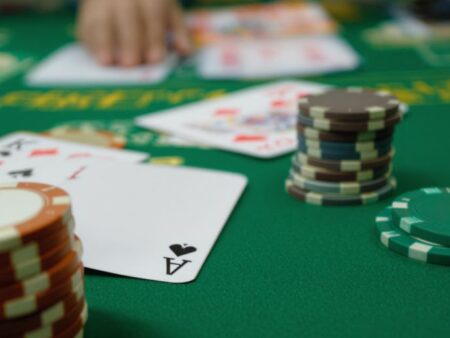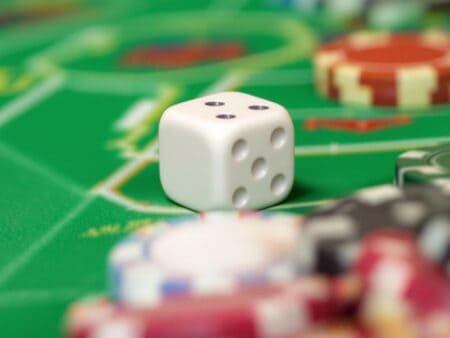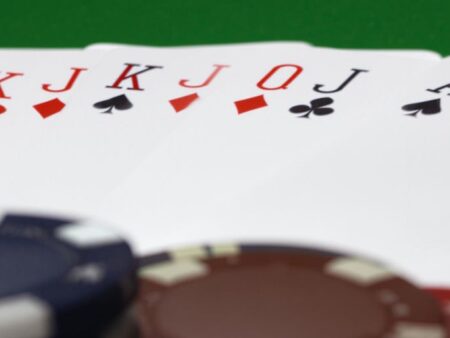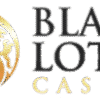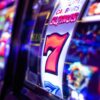Most blackjack players don’t lose because they take wild risks. They lose because they make decisions without understanding the math. Every hit, stand, double, or split is a shot in the dark. Guesswork is what drains their bankroll.
Blackjack is not about luck. It is about numbers. The odds are built into the game. Each card that appears shifts those numbers in ways you can learn to recognize. The dealer’s upcard, the cards already played, and your own hand all contain information. Once you know how to read it, the game becomes much clearer.
This guide shows you how to calculate blackjack odds in a clear and simple way. You will learn how to estimate the chance of busting, how to figure out what the dealer is likely to draw, and how to make stronger decisions based on real probabilities. There is no need to memorize complex charts or study advanced math. These are practical steps that you can use right away to play smarter.
Key Takeaways
- Knowing the point values of each card (2-10 are face value, face cards are 10, Aces are 1 or 11) is the first step to playing smart.
- Deciding whether to ‘hit’ for another card or ‘stand’ with your current hand is a core part of the game, and it depends on your cards and the dealer’s visible card.
- Advanced moves like splitting pairs, taking insurance, or even surrendering your hand can change the game if used correctly.
- Understanding payouts, like the difference between a standard win (1:1) and a natural blackjack (often 3:2), helps you know what you can win.
- Learning how to calculate blackjack odds involves understanding probability and how different table rules, like whether the dealer hits or stands on a soft 17, affect your chances.
Understanding Blackjack Card Values
Alright, let’s get down to the nitty-gritty of how Blackjack actually works. It’s not rocket science, but you gotta know your numbers. Think of it like learning the alphabet before you can write a novel. These card values are your building blocks, and getting them straight is step one. Seriously, it’s that important.
Number Cards: Face Value
This is the easy part. Cards from 2 through 10? They’re worth exactly what they say on the tin. A 7 is worth 7 points, a 3 is worth 3 points. Simple, right? No tricks here, just straightforward value. It’s almost too easy, makes you wonder if there’s a catch.
Face Cards: Ten Points Each
Now, the fancy cards – the Jacks, Queens, and Kings. These guys all get a flat rate of 10 points. Doesn’t matter if it’s a King of Spades or a Jack of Hearts, they’re all worth a cool ten. So, if you get a Queen and a 7, you’re looking at 17 points. Pretty neat.
The Versatile Ace: One or Eleven
The Ace is where things get interesting, and honestly, a little bit wild. This card is a chameleon; it can be worth either 1 point or 11 points. Which value does it take? Whichever one helps your hand the most, of course! If you have an Ace and a 6, that’s a soft 17 (11 + 6). But if you have a 10 and an Ace, that’s a Blackjack – 21 points! It’s all about making the best possible hand without going over that magic number, 21. You really gotta love the flexibility of the Ace; it can save your bacon more times than you’d think.
The Core Mechanics of Blackjack
Alright, let’s get down to the nitty-gritty of how a blackjack hand actually plays out. It’s not just about getting cards; there’s a flow to it, a rhythm you need to catch. First off, you gotta find a seat at the table. They usually have a few decks going, and the dealer is the one running the show. They’ll deal out two cards to everyone, including themselves. Usually, your cards are face up so you can see what you’re working with, but the dealer will have one card showing and one tucked away, face down. This is where the real thinking starts. You look at your cards, you look at the dealer’s one visible card, and you gotta make a choice: do you want another card, or are you happy with what you’ve got? This is the hit or stand decision, and it’s probably the most important one you’ll make all hand. The dealer, though, they’ve got their own set of rules they have to follow. They can’t just decide to hit or stand on a whim. They’re usually pretty predictable, which is something you can totally use to your advantage if you pay attention. It’s like a little puzzle, figuring out what they might have and what you should do next. Don’t get too caught up in the excitement; stay calm and make smart moves.
Strategic Decisions: Hit, Stand, or Double
Deciding whether to hit, stand, or double down is where the real strategy in blackjack comes into play. It’s not just about getting close to 21; it’s about making the smartest move based on your cards and what the dealer is showing. This is where you can really start to chip away at the house edge.
When to Hit for Another Card
Hitting means asking for another card. You do this when your current hand total is low, and you think another card won’t push you over 21. For example, if you have a hard 11 or less, you should always hit. Even with a hard 12, you’ll hit if the dealer shows a 4, 5, or 6. It’s a calculated risk, you know? Sometimes it pays off big, other times… well, you bust.
Knowing When to Stand Pat
Standing means you’re happy with your current hand and don’t want any more cards. Generally, if your hand total is 17 or higher, you stand. It’s a pretty safe bet. You’ll also stand on a hard 13, 14, 15, or 16 if the dealer is showing a weak card, like a 2 through 6. The dealer has to hit until they reach 17, so if they start with a low card, they might bust before they even get to your hand. It’s all about watching that dealer’s upcard.
The Power of Doubling Down
Doubling down is a really exciting move. You get to double your original bet, but you only get one more card. You should only do this when you have a really strong advantage. The best time to double down is when you have a total of 11. You should also consider doubling on a 10 if the dealer’s upcard is a 2 through 9. And don’t forget those soft hands! A soft 15, 16, or 17 can be a great candidate for doubling if the dealer is showing a 4, 5, or 6. It’s a bold move, but it can really boost your winnings when it works out.
Advanced Blackjack Maneuvers
Beyond the basic hit or stand, blackjack offers some really interesting ways to spice up your play and potentially boost your winnings. These are the moves that separate the casual players from those who really know their way around the felt. It’s not just about luck; it’s about making smart choices when the opportunity arises.
The Art of Splitting Pairs
So, you get dealt two cards of the same rank, like two sevens or two kings. This is your cue to consider splitting. When you split, you’re essentially turning one hand into two separate hands. You’ll need to match your original bet for the second hand, and then you play each one independently. This is a fantastic move when you’re dealt Aces or eights, as it gives you a fresh start with two potentially strong hands. Splitting pairs can really change the game’s dynamic, especially when the dealer is showing a weak card. It’s a calculated risk that often pays off.
Understanding Insurance Bets
Insurance is a side bet you can make when the dealer’s upcard is an Ace. You’re essentially betting that the dealer has a blackjack. If they do, you win the insurance bet, usually at 2:1 odds, and then the main hand is resolved. If the dealer doesn’t have a blackjack, you lose your insurance bet, and the main hand continues as normal. Most experienced players will tell you to steer clear of insurance. It’s generally a bad bet in the long run, increasing the house edge. Think of it as a way to protect yourself, but it’s usually not the most profitable path. It’s like buying extra protection you probably won’t need.
The Option to Surrender
Surrender is a less common but sometimes very useful option. If you’re dealt a really bad hand, and the dealer’s upcard looks strong, some casinos allow you to surrender. This means you give up your hand and forfeit half of your original bet. It’s not a glamorous move, but it can save you money when you’re in a truly hopeless situation. For example, having a hard 16 against a dealer’s 9 or 10 is often a good spot to consider surrendering. It’s a way to cut your losses before they get too big, and sometimes, that’s the smartest play you can make. It’s all about minimizing damage when the cards aren’t in your favor.
Decoding Blackjack Payouts
So, you’ve managed to beat the dealer, maybe even snagged a natural 21. Now, what does that mean for your wallet? Let’s break down how those payouts work, because knowing this stuff is pretty important.
Standard Wins: Even Money
This is the most common way you’ll win. If your hand is better than the dealer’s without busting, and you didn’t get a natural blackjack, you get paid even money. Simple enough, right? Bet $10, win $10. You get your original bet back plus an equal amount as winnings. It’s a solid win, but not the jackpot.
Achieving a Natural Blackjack
Ah, the coveted natural blackjack! That’s when you get an Ace and a 10-value card (10, Jack, Queen, or King) on your first two cards. This is usually the best outcome. Most of the time, a natural blackjack pays out at 3:2. So, if you bet $10, you’d win $15. That’s a nice little bonus for hitting that perfect 21 right out of the gate. However, some places might offer a less favorable 6:5 payout for a natural blackjack. Always check the table rules before you sit down, seriously.
Variations in Blackjack Payouts
It’s not always a straight 3:2 for a natural. Some casinos, especially online or in certain regions, might change the payout for a natural blackjack. You might see 6:5, which is definitely less exciting. Also, some games might have different rules for dealer actions, like hitting or standing on a soft 17, which can slightly alter the overall odds. It’s a good idea to know what you’re getting into before you place that first bet. You want the best odds possible, and that starts with understanding the payout structure.
Minimizing the House Edge
Alright, let’s talk about how to shave a little bit off that casino advantage. It’s not about magic tricks, it’s about knowing the game’s rules and how they affect your odds. Think of it like this: the casino has a built-in edge, but you can be smart about where you play and what you pay attention to. It’s all about making informed choices before you even get your first cards.
Choosing Favorable Table Rules
This is a big one. Not all blackjack tables are created equal. You’ve got to be a bit of a detective. Look for tables that offer a 3:2 payout for a natural blackjack. Some places have sneaky 6:5 payouts, and that really eats into your potential winnings. Also, pay attention to the number of decks used. Fewer decks generally mean a lower house edge. It might seem like a small detail, but over time, it adds up. Finding a good table is like finding a good parking spot; it just makes everything easier.
The Impact of Dealer Soft 17 Rules
Here’s another rule that matters: what does the dealer do when they get a soft 17 (that’s an Ace and a 6)? If the rules say the dealer must hit on a soft 17, the house edge goes up a little bit, usually around 0.2%. If they have to stand on all 17s, that’s better for you. It’s a simple rule, but it’s one of those things that can make a difference in your long-term results. Always check the table rules before you sit down. It’s worth it to find a table where the dealer stands on soft 17.
Understanding Payout Differences
We already touched on this with the 3:2 versus 6:5 payout for a blackjack. But there are other payout differences to consider. Some games might have different rules for splitting pairs or doubling down, which can also slightly alter the house edge. It’s about understanding the whole package of rules. The goal is to find the table that offers the most player-friendly rules. It’s not about getting rich quickly, it’s about playing smarter and giving yourself the best possible chance. You want to minimize the house edge as much as you can, so you can focus on your strategy and enjoy the game more. It’s a game of skill and chance, and you want to tip the scales in your favor as much as possible.
Leveraging Basic Strategy Charts
Alright, so you’ve got the card values down, you know how the game flows, and maybe you’ve even dabbled in hitting or standing. But to get an edge, you gotta talk about basic strategy charts. These things are like the cheat sheets of blackjack, but way more legit. They’re not some secret sauce cooked up by casinos; nope, they came from computers running millions of hands to figure out the absolute best move for every single situation you can imagine. Seriously, it’s all about math and probability, not luck.
What is a Basic Strategy Chart?
Think of a basic strategy chart as a map for your blackjack journey. It’s usually a grid. Across the top, you’ve got the dealer’s upcard, from a 2 to an Ace. Down the side, you’ve got your own hand – whether it’s a hard total, a soft total (meaning it has an Ace that can be 1 or 11), or a pair you might split. The chart tells you exactly what to do: Hit (H), Stand (S), Double Down (D), Split (P), or Surrender (R), depending on your hand and the dealer’s card. It’s the statistically optimal play for every scenario. For example, you’ll see that you should always hit if your hand is 11 or less, and you should double down on 11 against most dealer upcards. It’s pretty straightforward once you get the hang of it.
| Your Hand | Dealer Shows 2 | Dealer Shows 3 | Dealer Shows 4 | Dealer Shows 5 | Dealer Shows 6 | Dealer Shows 7 | Dealer Shows 8 | Dealer Shows 9 | Dealer Shows 10 | Dealer Shows Ace |
|---|---|---|---|---|---|---|---|---|---|---|
| Hard 11 | D | D | D | D | D | D | D | D | D | H |
| Hard 10 | D | D | D | D | D | D | D | D | H | H |
| Hard 9 | H | D | D | D | D | H | H | H | H | H |
How to Use a Strategy Chart Effectively
Okay, so you’ve got the chart. Now what? First off, don’t just glance at it. You gotta really use it. When you’re playing, look at your cards, look at the dealer’s card, and then find that exact spot on the chart. Make the move it tells you to make. No exceptions. It might feel weird at first, especially when the chart tells you to hit a hard 16 against a dealer’s 10 – that feels wrong, I know! But trust the math. Over time, this is what minimizes the house edge. You can’t just pick and choose which advice to follow; that defeats the whole purpose. If you’re playing online, you can often have the chart open right next to you. Just make sure you’re playing a game where the rules match your chart, like whether the dealer hits or stands on a soft 17. That makes a difference, you know.
Memorizing Key Playing Habits
Looking at a chart is fine when you’re starting out, but the real magic happens when you start memorizing it. It’s like learning a new language or practicing a musical instrument. You wouldn’t just read sheet music at a concert, right? You gotta internalize it. Start with the easiest parts, like always hitting a hard 11 or always standing on hard 17s. Then move on to the trickier spots. Practice at home, maybe even print out a blank chart and fill it in. The goal is to get to a point where you don’t even have to think about it. Your decisions become automatic. This frees up your brainpower to focus on other things, like maybe spotting patterns or just enjoying the game more. It takes time, sure, but the payoff is huge. You’ll play faster, make fewer mistakes, and generally just be a much better blackjack player. You can even find some great resources online to help with practice drills, which are super helpful for drilling the strategy into your brain. Remember, perfection matters in this game; there’s no room for errors if you want to gain a real edge. If you’re looking to improve your overall game, consider exploring different crypto slots for a change of pace.
The Role of Strategy in Blackjack
Blackjack isn’t just about luck; it’s a game where smart choices matter. You’re up against the dealer, and your decisions, like whether to hit or stand, can change the outcome. The dealer has their own set of rules they have to follow, which are pretty predictable. Knowing these rules and how they affect your hand is a big part of playing well.
Player Decisions vs. Dealer Rules
Think of it like this: you get your cards, and you have options. Do you take another card, hoping to get closer to 21 without going over? Or do you play it safe and stick with what you have? This choice depends a lot on what the dealer is showing. If the dealer has a weak upcard, like a 5 or 6, you might be more aggressive. But if they’re showing a strong card, say a 10 or an Ace, you’ll probably want to be more cautious. The dealer, on the other hand, has a strict routine. They usually have to hit if their hand is 16 or less, and they must stand if they have 17 or more. This predictability is something you can use to your advantage. Understanding these dealer rules is key to making your own best move.
The Importance of Informed Choices
Making informed choices means you’re not just guessing. You’re looking at your hand, the dealer’s card, and thinking about the probabilities. For instance, if you have a hard 16 and the dealer shows a 10, hitting might seem risky, but statistically, it’s often the better play than standing and almost certainly losing. It’s about playing the odds, not just your gut feeling. You can’t control the cards you get, but you can control how you play them. That’s where the strategy comes in. It’s like having a map for a complicated journey; it shows you the best path to take.
Strategy Charts as a Winning Tool
So, how do you know the best move? That’s where strategy charts come in. These charts are basically mathematical guides. They show you the statistically best action for every possible hand you can have against every possible dealer upcard. They’re built on millions of simulated hands, so they tell you what action has the highest expected return. For example, a chart might tell you to double down on 11 against a dealer’s 6, or to split a pair of 8s against a dealer’s 10. It takes the guesswork out of it. You don’t have to memorize complex math; you just follow the chart. It’s a simple way to cut down the house’s advantage and give yourself a much better shot at winning.
Calculating Your Chances: Blackjack Odds
Understanding the odds in blackjack is like having a secret map to the casino. It’s not just about luck; it’s about knowing the probabilities and making smart choices. You can figure out your chances of winning, or more importantly, your chances of busting. It’s pretty neat when you think about it. Most players just wing it, but you? You’re going to be different.
Understanding Probability in Blackjack
Blackjack is a game of chance, sure, but it’s also a game of calculated risks. The odds aren’t fixed; they shift with every card dealt. This is why knowing the probabilities is so important. It helps you make better decisions, like when to hit and when to stand. The house always has a slight edge, but understanding probability helps you shrink that advantage. For instance, knowing the dealer’s up card gives you a clue about their chances of busting. If the dealer shows a 5, they have a pretty good chance of going over 21. That’s good news for you!
Here’s a quick look at dealer bust rates based on their up card:
| Dealer Up Card | Bust Rate |
|---|---|
| 2 | 35.30% |
| 3 | 37.56% |
| 4 | 40.28% |
| 5 | 42.89% |
| 6 | 42.08% |
| 7 | 25.99% |
| 8 | 23.86% |
| 9 | 23.34% |
| 10 | 21.43% |
| Ace | 11.65% |
How to Calculate Blackjack Odds
Calculating odds in blackjack isn’t as complicated as it sounds. It mostly involves understanding your own hand and the dealer’s visible card. You can also look at your chances of busting if you decide to hit. For example, if you have a hand totaling 16, hitting is risky. Your odds of busting are quite high, around 62%. That’s a lot to consider when you’re at the table.
- Player Hand Value: What your current cards add up to.
- Odds of Busting from a Hit: The probability you’ll go over 21 if you take another card.
- Dealer’s Up Card: The dealer’s visible card, which gives clues to their potential hand.
Remember, these numbers are guides. They help you make informed decisions, not guarantee wins.
Factors Influencing Blackjack Odds
Several things can change the odds in blackjack. The number of decks used is a big one. Fewer decks generally mean better odds for the player. Also, the specific rules of the game matter. Does the dealer hit or stand on a soft 17? That makes a difference. Payouts for a natural blackjack, like 3:2 versus 6:5, also affect the house edge. Even the simple act of splitting Aces can improve your chances. It’s a complex dance of probabilities, but once you get the hang of it, it’s really rewarding.
Enhancing Your Blackjack Skills
Alright, so you’ve got the basics down, you know your card values, and you’re starting to get a feel for the game. But how do you actually get better? It’s not just about luck, you know. You gotta put in some work. Think of it like learning to ride a bike; you don’t just hop on and win the Tour de France. You practice, you fall a bit, and eventually, you get it. Blackjack’s kinda the same, but way less scraped knees.
Practicing with Blackjack Simulators
Honestly, one of the best ways to sharpen your skills without risking your actual cash is by using blackjack simulators. These things are everywhere online. They’re like video games, but specifically for blackjack. You get dealt hands, you make decisions – hit, stand, double down, split – and the simulator tells you if you made the right move. It’s a super low-pressure way to get a ton of practice. You can try out different strategies, see how they play out against various dealer upcards, and really start to build that muscle memory for making the best decision every single time. It’s like having a personal blackjack coach available 24/7.
Learning from Strategy Guides
Okay, so simulators are great for practice, but you also need to know what to practice. That’s where strategy guides come in. These aren’t just random tips; they’re based on math, like, serious probability stuff. They’ll tell you, for example, that you should always split Aces and 8s, but never split 10s. Sounds simple, right? But knowing why is important. These guides break down all those tricky situations – like when to hit on a hard 12 against a dealer’s 2, or when to stand on a soft 17. Keep one handy, maybe even print it out if you’re playing online. It’s your roadmap to playing smarter.
Building Confidence at the Table
This is the last piece of the puzzle, and it’s a big one. You can know all the strategy in the world, but if you’re a nervous wreck at the table, it’s not going to help much. Confidence comes from practice and knowledge. The more you use those simulators, the more you study those strategy guides, the more you’ll start to trust your decisions. You’ll feel more comfortable when you’re dealt a tricky hand or when the dealer shows a strong upcard. Remember, blackjack is a game of skill mixed with chance. Keep your head, stick to your strategy, and don’t let a few bad beats throw you off your game. You got this!
Responsible Gaming and Bankroll Management
Alright, let’s talk about keeping your head straight when you’re playing blackjack. It’s easy to get caught up in the excitement, you know? One minute you’re up a bit, the next you’re down. That’s where managing your money and playing smart come in. It’s not just about the cards; it’s about not letting the game get the better of you. Seriously, nobody wants to walk away with an empty wallet and a sour mood. So, let’s get into it.
Setting Betting Limits
This is probably the most important thing. Before you even sit down, decide how much you’re willing to lose. And stick to it. No ifs, ands, or buts. Think of it like a movie ticket – you know how much that costs, and you don’t spend more than that, right? Same idea here. Maybe you set a limit of $100 for the night. Once that $100 is gone, you get up and walk away. It sounds simple, but it’s harder than it looks when you’re on a losing streak. Don’t let the thrill of the game push you past your pre-set boundaries.
Avoiding Chasing Losses
This is the slippery slope. You lose a few hands, and suddenly you think, ‘If I just bet a little more, I can win it all back.’ Nope. That’s a trap. Chasing losses usually just leads to bigger losses. It’s like trying to dig yourself out of a hole with a shovel, but you keep digging deeper. Instead, take a break. Maybe grab a drink, clear your head, and then decide if you want to play again with a fresh mindset and your original budget. Don’t let frustration dictate your bets.
Maintaining Composure During Play
Blackjack can be a rollercoaster. You’ll have winning streaks and losing streaks. The key is to stay calm through it all. If you win a few hands in a row, don’t get overconfident and start betting wildly. And if you’re losing, don’t get angry and start making impulsive decisions. Think of yourself as a poker-faced player, even though no one can see your face. Keep your emotions in check. A clear head makes better decisions, and better decisions lead to better outcomes over time. It’s a marathon, not a sprint, remember that.
Wrapping It Up
So, we’ve gone over how to figure out the odds in blackjack. It’s not as scary as it sounds, right? Knowing the card values and how the dealer plays is a big help. Using a strategy chart can really make a difference, too. Remember, blackjack is a game of skill mixed with luck. Keep your head straight, stick to what you’ve learned, and manage your money well. You won’t win every hand, but understanding the math definitely gives you a better shot at walking away happy. Play smart, play responsibly, and have fun out there.
Frequently Asked Questions
How do I know what each card is worth in Blackjack?
Think of card values like points in a game. Number cards (2 through 10) are worth their face value. So, a 7 is worth 7 points. Face cards like Jacks, Queens, and Kings are all worth 10 points. Aces are special; they can be worth either 1 or 11 points, whichever helps your hand the most.
What’s the main goal in Blackjack?
You play against the dealer. The goal is to get your cards as close to 21 as possible without going over. You get two cards, and then you decide if you want another card (hit) or if you’re happy with your total and want to stop (stand). The dealer also plays, and whoever is closer to 21 without busting wins.
When should I hit or stand?
Deciding whether to hit or stand is super important. You look at your cards and the dealer’s visible card. If you have a low total, like 11 or less, you’ll probably want to hit. If you have a high total, like 17 or more, standing is usually safer. Strategy charts help you make the best choice for every situation.
What does it mean to ‘double down’?
Doubling down means you double your bet after getting your first two cards. You only get one more card after that. It’s a good move when you have a strong starting hand, like an 11, and think that one more card will give you a great total, maybe 19 or 20.
What is splitting pairs in Blackjack?
Splitting pairs is when you get two cards of the same number, like two 8s. You can choose to split them into two separate hands. You have to bet the same amount on the second hand as your first bet. It can be a good move if you get two Aces or two 8s.
What is an insurance bet?
Insurance is like a side bet you can make if the dealer’s face-up card is an Ace. You’re betting that the dealer will get a Blackjack. If they do, you win the insurance bet. If they don’t, you lose the insurance bet, but the hand continues as normal.
Are strategy charts helpful in Blackjack?
Yes, strategy charts are like cheat sheets that tell you the best move for every hand combination. They’re based on math and help you make smart decisions to lower the house’s advantage. Using one is a great way to improve your game.
How can I manage my money while playing Blackjack?
Managing your money is key! Set a budget for how much you’re willing to bet and stick to it. Never try to win back money you’ve lost by betting more than you planned. It’s also wise to take breaks and stay calm, even if you’re on a losing streak.




